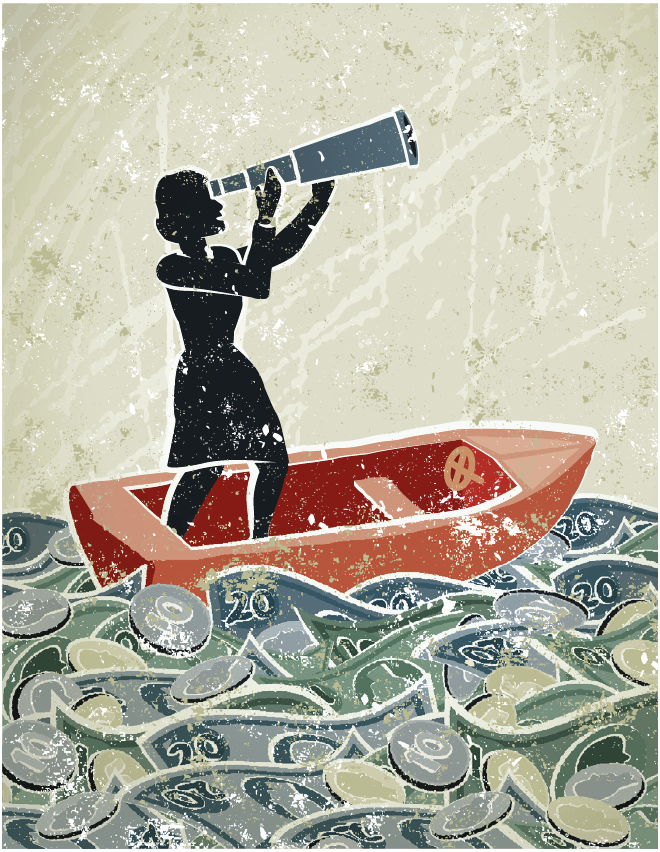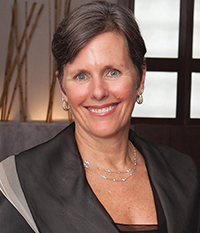
JUST BELOW THE relentless drumbeat of negativity that currently dominates our media, something powerfully good is happening in our country.
I think of it as women and millennials gaining greater control of money, thereby increasing their social impact, or in other words: Women + Money + Millennials + Internet = Power + Social Impact.
A tidal wave of wealth has transferred or will soon transfer to women. And women, by all evidence, are inclined to use their resources — including money — to make the world a better place.
Female Financial Power
Last summer, at a “Make It Better Money, Values, Impact” symposium in Chicago, Melanie Sabelhaus, serial entrepreneur, former deputy administrator of the U.S. Small Business Administration and American Red Cross vice-chair, presented additional proof of women’s explosive financial power.
She noted that women now control 60 percent of our nation’s wealth and own 51 percent of the New York Stock Exchange. Even more of this corporate power will flow to them, because of mounting data that demonstrates that corporations with women in the C-suite and on their boards are more successful than their all-male counterparts.
Some other empowering stats include the fact that women now start twice as many new businesses as men. Women of color are starting six times more businesses than their male counterparts. And women under 40 are outpacing men in higher education and the workforce by wider margins every year.
Women Give Back
Perhaps the best proof that women are more inclined to maximize good with dollars they spend or invest comes from the philanthropic world. Studies by the Indiana University Lilly Family School of Philanthropy highlight the fact that women give more than men and give more collaboratively and effectively.
“In the top 25 percent of combined income and assets, women give 156 percent more than men,” says Debra Mesch, MBA, Ph.D., director of the Women’s Philanthropy Institute at the Lilly School. “But also, they give more than men at every age and income level. And younger women give twice as much as younger men.”
Mesch notes that women are especially effective givers because when they adopt a cause to support, they give their heart, emotions, time, talents and connections too. Women dig in to learn more, help more, and ask their friends to pitch in.
I also see this manifest itself in the way women purchase; we will pay more for the experience of helping others. Women prefer to work for and invest in businesses that prioritize serving their communities. This female influence accounts, in part, for the growing importance of corporate social responsibility and for the surge of interest in “impact investing” in for-profit as well as nonprofit areas.
And the really good news for women is that the power of the internet amplifies all these positive trends around women and money. It makes it even easier for people to find resources that align with their values. And with one click, women can share what they find or care about across their social media platforms.
I’d like to think that if women are more effective and generous philanthropists, then the more money they control, the faster the world will improve through philanthropy.
Numbers Talk
According to a 2013 Nielsen research paper entitled “Women Control the Purse Strings,” the Fleishman Hillard digital marketing agency estimates that women will control two-thirds of the consumer wealth in the U.S. over the next decade and be the beneficiaries of the largest transference of wealth in our country’s history.
A 2015 Bank of Montreal study showed that women already controlled 51 percent of U.S. wealth and held 52 percent of business management, professional and related positions. Researchers predicted that by 2020 women will control over two-thirds of the nation’s wealth.
Women drive 70 to 80 percent of all consumer purchasing through a combination of their buying power and influence. Influence means that even when a woman isn’t paying for something herself, she is often the persuasive element or veto-vote for someone else’s purchase.
In the U.S., women use social networks more prolifically than men.
As of January 2018:
52% of Facebook users are female
68% of Instagram users are female
81% of Pinterest users are female



